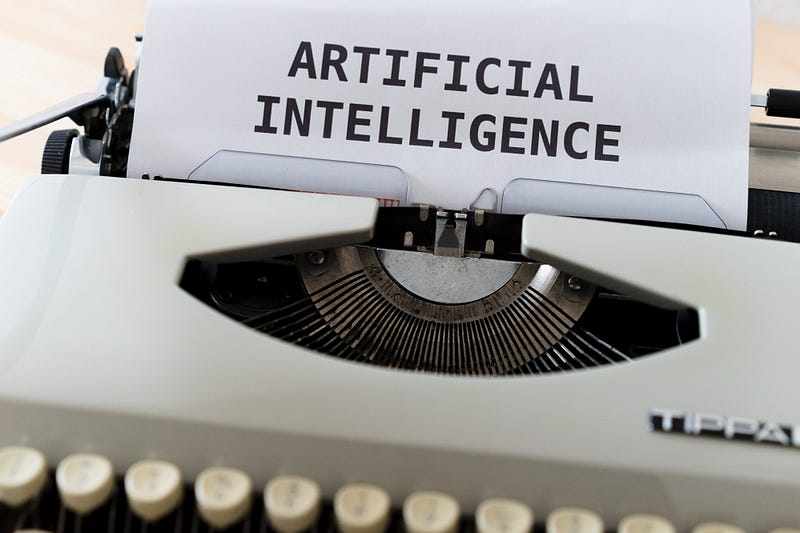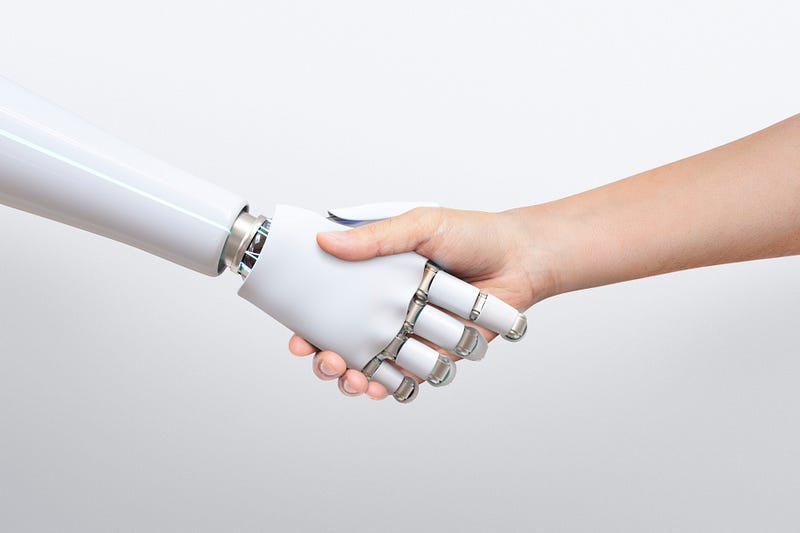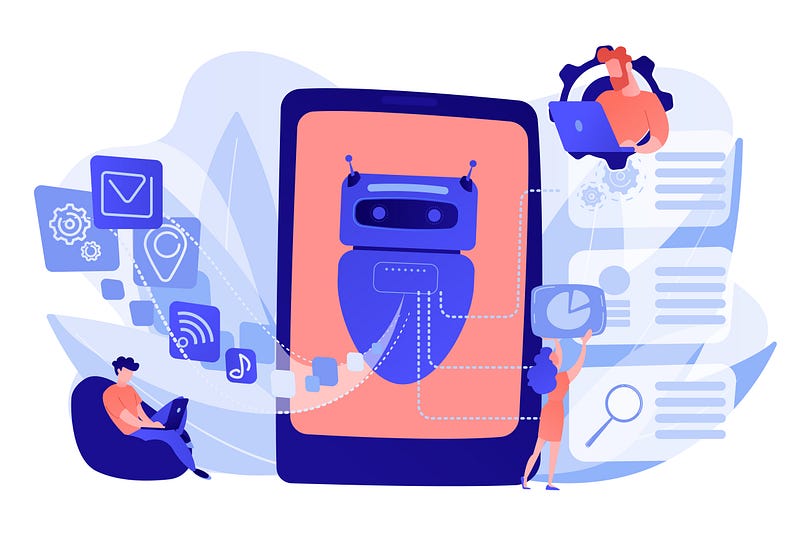Exploring the Future of AI in L&D
Exploring the Future of AI in L&D
How AI is Transforming the Landscape of Business Training, Knowledge Sharing, and Education

Introduction: Unleashing the Power of AI in L&D
In today’s tech-saturated landscape, buzzwords like Artificial Intelligence (AI) are becoming increasingly common.
Yet, amidst all the noise, excitement, and uncertainty, discerning the real potential of AI, and how it applies to you and your field, can be challenging.
If you are an L&D professional, a manager, a supervisor, or a business owner keen on fostering a culture of learning and growth and are wondering how you can use AI in your learning, training and knowledge management systems, this article is for you.
Some might worry — “Will AI replace me?” “Am I skilled enough to utilize AI tools effectively?”, or“Is it relevant to what we do in my company?” — but let’s soothe those fears.
AI, especially Generative AI, can supercharge a huge amount of your L&D, training, upskilling, onboarding, and assessment processes.
There are already platforms and systems out there that offer robust, user-friendly tools that enhance your L&D initiatives using AI, making them more efficient, and personalized, and saving you costs.
Let’s dive into some of the possibilities, use cases and applications for using AI in the L&D process and systems of your organisation.
Demystifying AI and Its Transformative Role in L&D
Artificial Intelligence, at its heart, is a subset of computer science that seeks to build machines that emulate human intelligence.

In the L&D landscape, the current AI tools and systems shine in content and assessment creation, personalising the learning experience for all individuals, data analysis, and performance tracking.
And this is just scratching the surface.
Things are moving quickly, and the use cases and applications of AI in business, education and L&D are growing and expanding on a weekly basis.
Among various types of AI, Generative AI has emerged as particularly impactful for L&D. Generative AI, responsible for technologies like OpenAI’s ChatGPT or DALL-E, and Google’s Bard, is a type of AI with a chat interface that can in a few moments, and with the right guidance, create new, original content — be it text, images, voiceovers, videos or even music — mirroring human creativity and style, using instructional and learning design best practices, and making it hyper-relevant and personalised to your organisation and teams.
Where the real power and impact of AI in L&D lies, is in significantly reducing the time and cost required to get things to near completion.

Note — It’s important to recognise that generative AI systems, although trained on masses of data and even able to pass law and medical exams, are at their core — systems that are built to predict the next best word. All the information generated should be verified and checked, and not taken as gospel.
But what it can do, is get you 90% of the way to finished, in a fraction of the time it would have usually taken.
Plus, it is much easier to be in “editing” mode, rather than “creating” mode.
Especially in the modern workplace, where things change rapidly, and you can’t wait weeks or even months for content to be developed and shared with your teams.
Think of AI in L&D as an extra team member.
This ‘member’ never gets tired and has all the learning and instructional design theory at their fingertips. It excels at figuring out how to structure and articulate your intended messages.
Furthermore, it’s skilled at identifying gaps, problem-solving with you, and suggesting areas for improvement.

The AI assistant is also adept at guiding learners through the learning process. However, remember to keep in mind that it’s essential to review its work. Even though AI is incredibly competent, it may occasionally misinterpret facts, making human oversight necessary.
It may seem like a lot, but using AI in business and in your learning systems is actually easier than it sounds.
It is necessary as well.
With the rate at which things are changing and the amount of reskilling and upskilling that is going to be required in the coming years as a result of the change — leaning on AI to help improve, streamline and grow the L&D functions in our businesses is critical.
This is futuristic, but it is not science fiction. And it’s happening today.
The ability to use AI in learning already exists and there is a rapidly growing potential of new ways to use AI in L&D. Harnessing this transformative power, teams can break traditional boundaries, creating learning experiences that are engaging, inclusive, and impactful.
So how can teams and businesses use AI in their learning, training and knowledge-sharing systems today?
The Here and Now: Practical Impacts and Uses of AI in L&D
Generative AI is more than just a promising future concept; it’s a potent reality altering the way educators, L&D managers, and creators of learning and training materials operate.

The use cases are already incredibly robust, and this is just the beginning. Below are some compelling applications and benefits that highlight AI’s practical impacts in the realm of learning and development:
- Efficient Content Creation and Automated Generation: Generative AI is already streamlining the content creation process. From creating courses, micro-learning lessons, company-specific training, and assessments, to populating your company’s knowledge hub, AI is capable of crafting unique, well-structured learning material swiftly. The ability to rapidly generate content is already saving significant amounts of time and resources for L&D teams of all sizes.
- Customized and Adaptive Learning Paths: The power of AI in learning extends beyond creating engaging content. It can tailor unique learning journeys that cater to the specific needs, skills, and learning pace of each learner. This personalization enhances engagement, retention, and effectiveness of learning experiences. As a result, gone are the days of one-size-fits-all, off-the-shelf learning materials.
- Dynamic, Relevant Content Across Formats: Generative AI is proficient at generating a variety of content, including text, images, audio, and even video presentations. This versatility allows small teams to deliver expansive and personalized learning experiences that align with diverse learning preferences.
- Real-Time Feedback and Performance Analysis: AI excels in providing immediate learner data analysis, enabling swift adaptation to learner needs for continuous learning outcome improvements. Furthermore, it can be used to identify gaps in knowledge or skills and suggests individualized learning paths or resources to bridge these gaps, contributing to enhanced performance over time.
- Scalable Tutoring: Generative AI’s scalability means that learners can access one-on-one tutoring, with AI answering questions and providing explanations — an invaluable feature in mass education scenarios where personalized attention from a human teacher may not be feasible.
- Efficient Administrative Tasks: From scheduling to grading and tracking learner progress, generative AI can automate routine tasks, freeing up more time for educators to focus on actual teaching and interaction with learners.
- Interactive Learning: AI chatbots can engage learners in interactive dialogues, simulating real-life scenarios to enhance understanding and make learning more engaging and enjoyable. In the business context, this can be used to walk learners through specific case studies and scenarios to ensure they fully grasp situations and are able to work their way to the solution.
By capitalizing on these capabilities, educators and L&D professionals can substantially enhance the efficiency and effectiveness of their teaching or training programs. Today’s AI tools are already incredibly powerful and continue to evolve, offering exciting possibilities for the future of learning and development.

The Horizon: AI’s Future Potential in L&D
The future of AI in learning and development, business training, knowledge sharing, and education is filled with exciting possibilities.
The capabilities of AI are continually expanding and evolving, which makes the future very promising.
Here are some potential advancements that experts and enthusiasts anticipate in the coming years:
- Advanced Personalization: AI algorithms will become even more sophisticated, leading to unprecedented levels of personalization in learning. This could extend beyond adjusting the pace of learning to include more complex elements such as the modality of instruction, the time of day when learning is most effective, and even mood-based customization.
- Intelligent Tutoring Systems: As AI continues to improve, we can expect to see the rise of intelligent tutoring systems (ITS). These systems will be capable of providing personalized feedback based on the learner’s strengths, weaknesses, and learning styles, much like a human tutor. Furthermore, they may even be able to detect and respond to a learner’s emotional state, ensuring an empathetic and supportive learning environment.
- Improved Accessibility: AI is expected to provide more inclusive and accessible learning experiences for people with disabilities. This might include tailored learning interfaces, audio descriptions for visually impaired learners, and more nuanced speech recognition for learners with speech impairments.
- Predictive Analysis: AI will likely play an increasingly critical role in predictive analysis, identifying potential challenges or areas of improvement before they become problematic. This could apply to both individual learners and entire educational systems, informing proactive interventions that keep learners on track.
- Immersive Experiences: With the convergence of AI and technologies like virtual reality (VR) and augmented reality (AR), learning could become increasingly immersive. AI-powered VR/AR can create lifelike simulations and experiential learning scenarios, perfect for fields that require hands-on training.
- Efficient Knowledge Management: AI could revolutionize how businesses manage their knowledge. Advanced search and indexing, predictive knowledge sharing based on individual roles or projects, and dynamic knowledge mapping are just a few possibilities on the horizon.
- AI-Assisted Curriculum Design: In the future, AI might play a significant role in designing curriculums, selecting learning materials, and even setting and grading assessments based on the individual learning goals and progress of each learner.
Remember, the future of AI is as broad and diverse as our imaginations allow.
While it’s exciting to consider these potential advancements, it’s also crucial to foster an ongoing conversation about the ethical use of AI in learning and development, ensuring that it’s used in a way that respects privacy, fosters inclusivity, and truly benefits learners.

Conclusion: Charting the Future of AI-Driven L&D
In the ever-evolving landscape of learning and development, AI’s role is becoming increasingly pivotal. However, AI is not meant to replace human capabilities but rather to enhance them.
Generative AI and similar technologies can revolutionize how we create content, personalize learning, and manage knowledge, driving a more engaged and capable workforce. They free L&D professionals to focus on the complex needs of learners, fostering stronger connections, and guiding them on their paths to growth.
The future of AI in education and training is not about machines outdoing humans but about humans and machines working together for superior outcomes. It means stepping into a future where learning is more engaging, personalized, and effective. Where every learner has access to the support they need to thrive, regardless of their individual needs or circumstances.
Embracing AI in learning and development signals a move towards a future where we’re not just observers but active participants, shaping this revolution. As we navigate forward, let’s harness AI’s transformative power, guiding its application to create a future of learning that is inclusive, efficient, and truly learner-centred.
The AI revolution in L&D is here; it’s time for us all to lead the charge.
Ready to Transform Your Business with AI?
If the potential of AI in learning and development has piqued your interest, get in touch with us at Beeline. We’re equipped to identify opportunities and ensure seamless AI implementation in your business.
Stay tuned for our upcoming article detailing the steps to get started with AI. With Beeline, you’re poised to harness AI’s power, revolutionizing your L&D efforts.
Let’s embrace the bright future of learning together.
Frequently Asked Questions (FAQs)
1 — How can AI enhance the personalisation and efficiency of learning in a digital or online academy?
AI can tailor learning experiences to individual needs and preferences in online academies, using data analysis to customise content and learning paths, enhancing engagement and effectiveness.
2 — What are the practical applications of AI in creating dynamic and engaging content for virtual learning platforms?
In virtual learning environments, AI can automate content creation, adapt materials in real-time based on learner interactions, and support various content formats, making learning more interactive and accessible.
3 — How can organisations leverage AI for compliance training and quality training within a training management system?
For compliance and quality training within training management systems, AI can ensure content is up-to-date with regulations, offer personalised learning experiences, and track progress to meet industry standards efficiently.